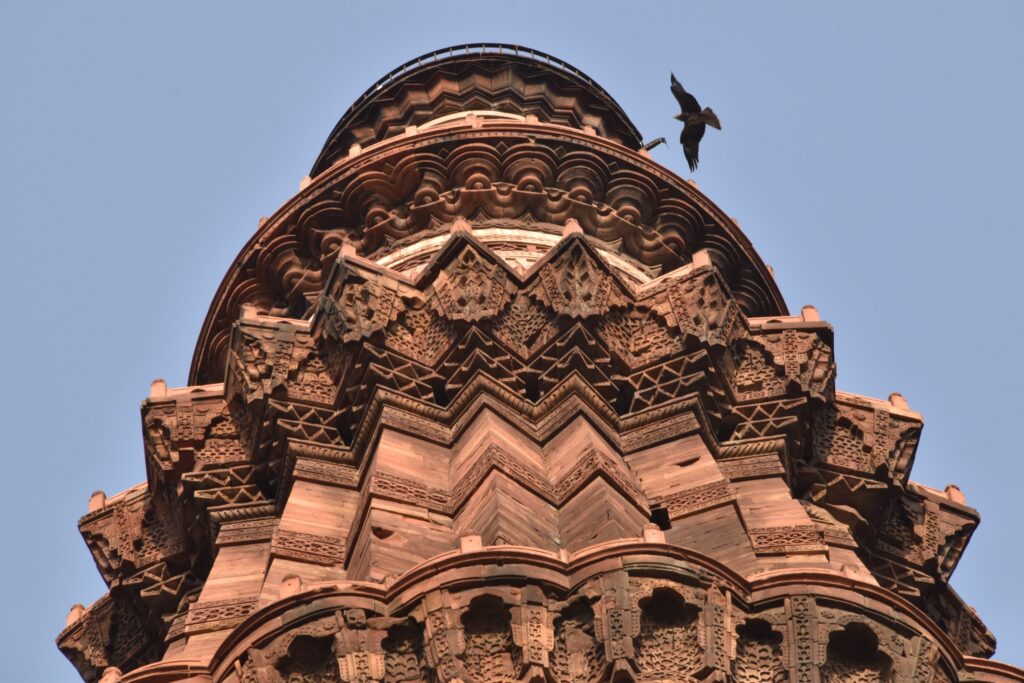
Qutab Minar
Table of Contents
The Qutab Minar also spelled Qutub Minar and Qutab Minar, is a minaret and “victory tower” that forms part of the Qutb complex. Which lies at the site of Delhi’s oldest fortified city, Lal Kot, founded by the Tomar Rajputs. It is a UNESCO World Heritage Site in the Mehrauli area of South Delhi, India.
It is one of the most visited tourist spots in the city, mostly built between 1199 and 1220. The surfaces of both are elaborately decorated with inscriptions and geometric patterns.
The Qutb Minar has a shaft that is fluted with “superb stalactite bracketing under the balconies” at the top of each stage. In general, minarets were slow to be used in India and are often detached from the main mosque. Where they exist.
A Synthesis of South Asian and Islamic Architecture
This victory tower is a symbol of the synthesis of traditional Islamic architecture and Southwestern Asian design.
Elizabeth Lambourn’s Islam Beyond Empires:
Mosques and Islamic Landscapes in India and the Indian Ocean studies the introduction of Islam in South Asia. And how the region influenced Islamic religious architecture. These newly arrived Muslims from the Islamic West escaped the Mongol Empire and emigrated to India. Where they constructed religious centers.
The Qutb Minar serves as a central marker to these new Muslim communities as well as a reminder of Islam’s presence in the area. The tower is commonly believed to bear Qutb-ud-din Aibak’s name, who started it. Shamsuddin Iltutmish, a follower of Khwaja Qutbuddin Bakhtiar Kaki, a Sufi saint from the 13th century, may have inspired the name as well.
Several historically noteworthy buildings from the Qutb complex surround the Minar. Qutub-ud-Din Aibak constructed the Quwwat-ul-Islam Mosque in AD 1199, which is located northeast of the Minar. The Delhi Sultans constructed the oldest mosque that is still in existence. It consists of a rectangular courtyard enclosed by cloisters, erected with the carved columns. And architectural members of 27 Jain and Hindu temples.
which Qutub-ud-Din Aibak destroyed, according to an inscription on the main eastern gate. Later, Shams-ud-Din Itutmish and Ala-ud-Din Khalji expanded the mosque and built a towering arched screen. The Iron Pillar in the courtyard bears an inscription in Sanskrit in Brahmi script of the fourth century A.D.
Vishnupada
According to this legend, the pillar was erected as a Vishnudhvaja in honour of Chandra, a powerful monarch, atop the hill known as Vishnupada. The nearby pillared cupola known as “Smith’s Folly” is a remnant of the tower. In 19th-century restoration, which included an ill-advised attempt to add some more stories.
In 1505, an earthquake damaged Qutub Minar; it was repaired by Sikander Lodi. On 1 September 1803, a major earthquake caused serious damage. Major Robert Smith of the British Indian Army renovated the tower in 1828. Over the fifth story, a pillared dome was added, adding a sixth. Under the direction of Viscount Hardinge, who was the Governor General of India at the time, the cupola was removed in 1848. To the east of Qutb Minar, it was restored and is still there now. “Smith’s Folly” is the name for this.
It was added to the list of World Heritage Sites by UNESCO in 1993.
The Ghurids of Qutab Minar
The construction of the Qutb Minar was planned and financed by the Ghurids. Who emigrated to India and brought Islam with them. The Ghurids, historically known as the Shansabanis. Were a clan of Tajik origin that hailed from Ghur, the mountainous region of modern-day western Afghanistan.
In the late eleventh century to the early twelfth century. The different sects of this nomadic clan united, losing its nomadic culture. During this time, they also converted to Islam.
Architecture of Qutab Minar
Pesrian-Arabic and Nagari in different sections of the Qutb Minar reveal the history of its construction. And the later restorations and repairs by Firoz Shah Tughluq and Sikandar Lodi.
The height of Qutb Minar is 72.5 meters, making it the tallest minaret in the world built of bricks. The tower tapers, and has a 14.3 meters base diameter, reducing to 2.7 meters at the top of the peak. It contains a spiral staircase of 379 steps.
Qutb Minar was an inspiration and prototype for many minarets and towers built. The Chand Minar and Mini Qutub Minar bear a resemblance to the Qutb Minar and are inspired by it.
The Stories of the Qutb Minar
The stories of the Qutb Minar vary in size, style, and material due to varying architects and builders constructing each section.
The Basement Story of the Qutb Minar
The Qutb Minar consists of five stories of red and grey sandstone. The lowest story, also known as the basement story, was completed during the lifetime of Ghiyeth al-Din Muhammad. A sultan during the Ghurid dynasty.
It is revetted with twelve semicircular and twelve flanged pilasters that are placed in alternating order. He is considered to be the first of the Delhi Sultan dynastic line. Since the spolia of Jain and Hindu temples were used to construct the minaret. The right-wing Hindu groups believed that they needed to perform a cleansing at the complex. In order to free the Hindu icons that were “trapped” in the minaret and the mosque complex.
On 21 May 2022, The Secretary at the Ministry of Culture. Govind Mohan, took the decision to conduct the excavation and iconography of idols found at Qutub Minar. The Ministry has now asked the ASI to submit an excavation report. Excavation can be started in the south of the minaret at a distance of 15 meters from the mosque.
Accidents of Qutab Minar
Before 1976, the general public was allowed access to the first floor of the minaret, Via the internal staircase. Access to the top was stopped after 2000 due to suicides On 4 December 1981. The staircase lighting failed. Between 300 and 400 visitors stampeded toward the exit. 45 were killed and some of then were injured. Most of these were school children. Since then, the tower has been closed to the public. Since this incident, the rules regarding entry have been stringent.
In literature
Letitia Elizabeth Landon’s poem ” is a reflection on a picture by Samuel Prout in Fisher’s Drawing Room Scrap Book, 1833.
In popular culture
Bollywood actor and director Dev Anand wanted to shoot the song “Dil Ka Bhanwar Kare Pukar” from his film Tere Ghar Ke Samne inside the Minar. However, the cameras in that era were too big to fit inside the tower’s narrow passage. Therefore the song was shot inside a replica of the Qutb Minar.
The site served as the Pit Stop for the second leg of the second series of The Amazing Race Australia.
A picture of the minaret is featured on the travel cards and tokens issued by the Delhi Metro Rail Corporation. A recently launched start-up in collaboration with the Archaeological Survey of India has made a 360o walkthrough of Qutb Minar available.
Ministry of Tourism recently gave seven companies the ‘Letters of Intent‘ for fourteen monuments under its Adopt a Heritage Scheme. These companies will be the future Monument Mitras. Qutb Minar has been chosen to be part of that list.
Gallery
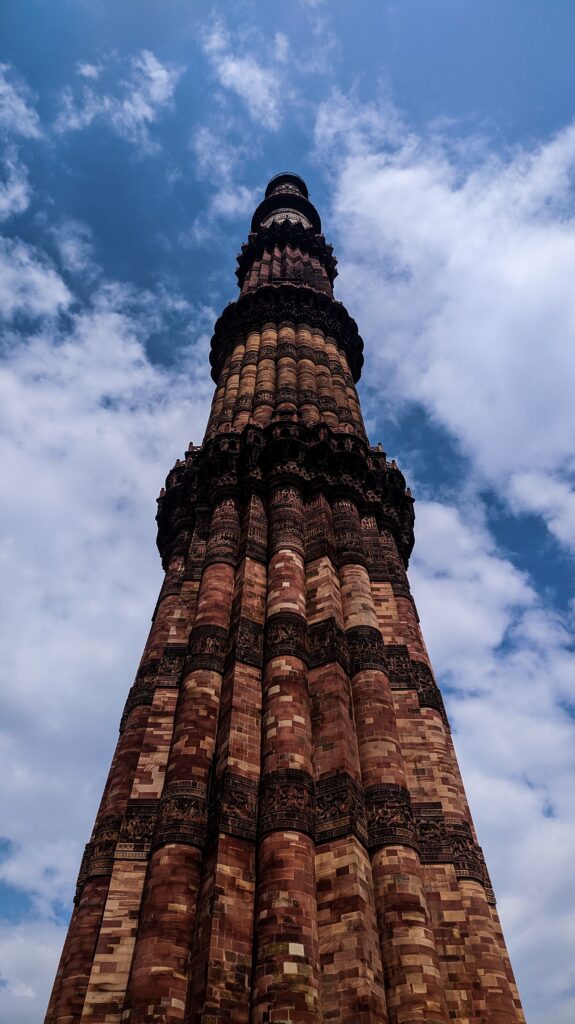
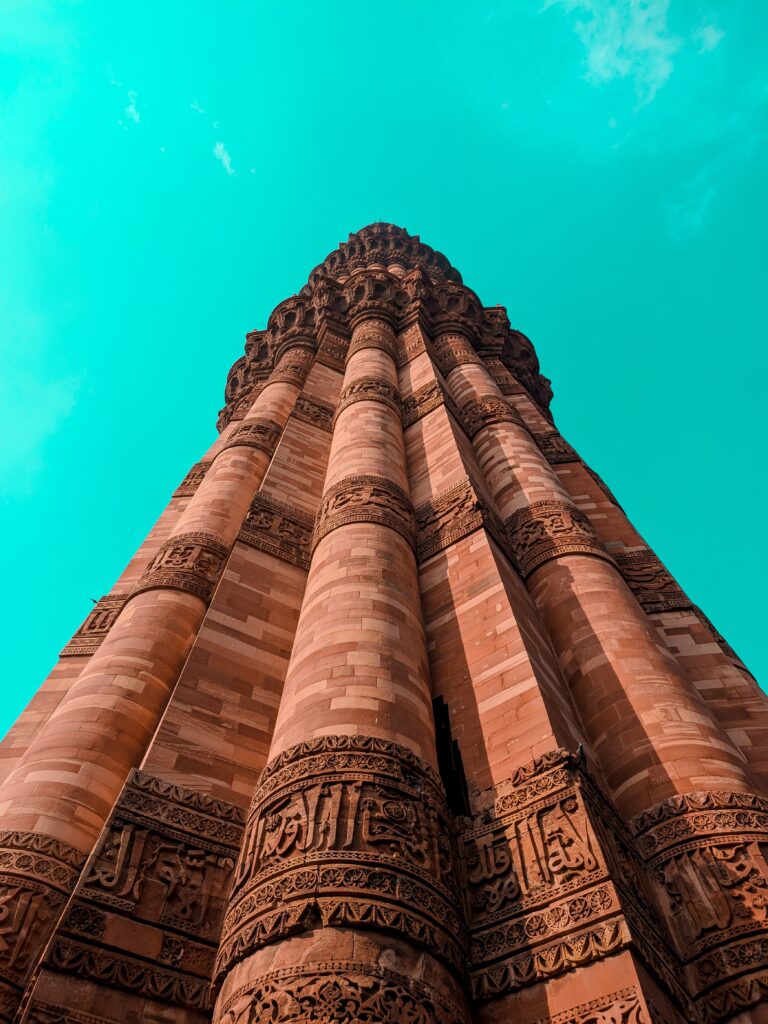
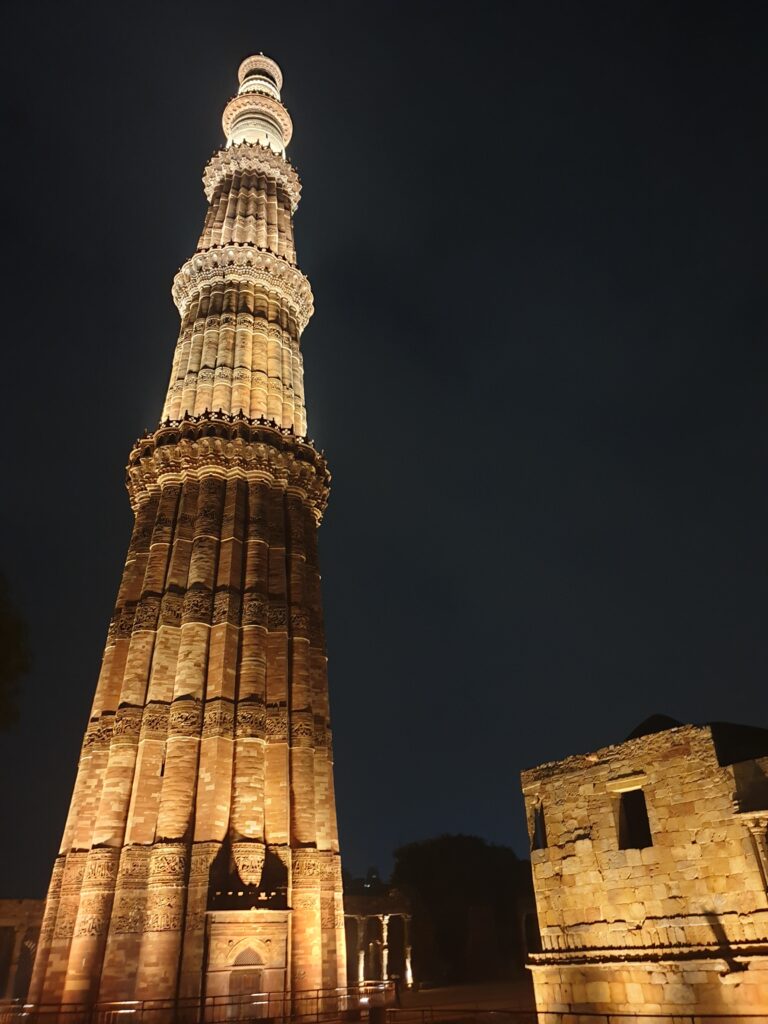
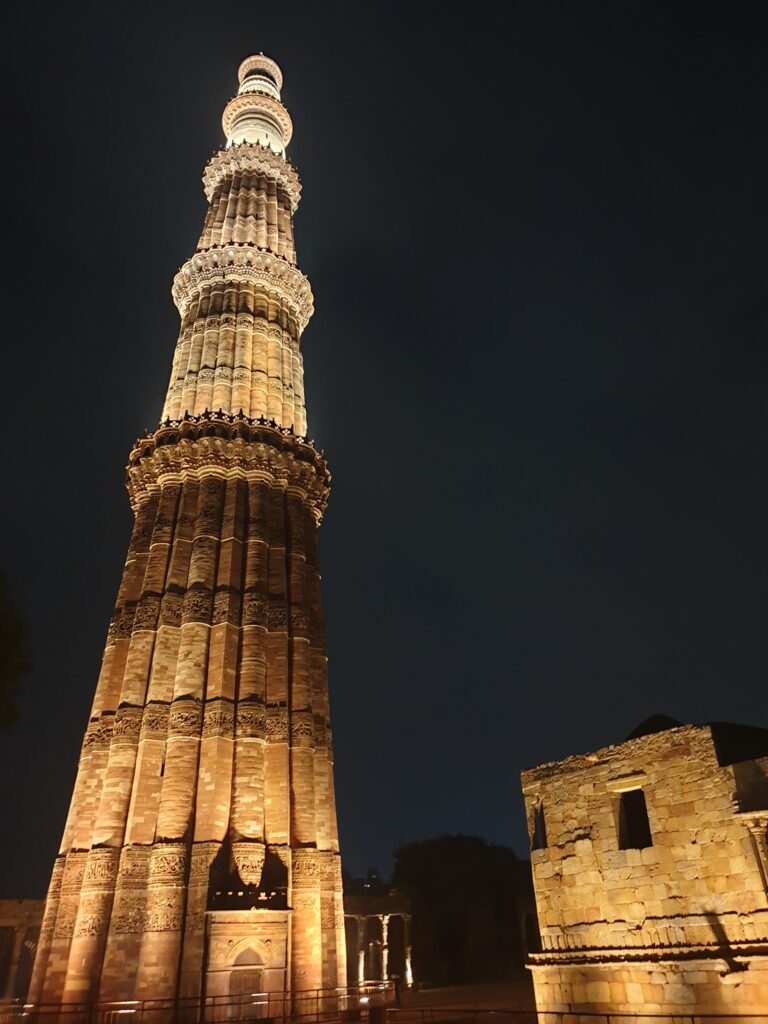
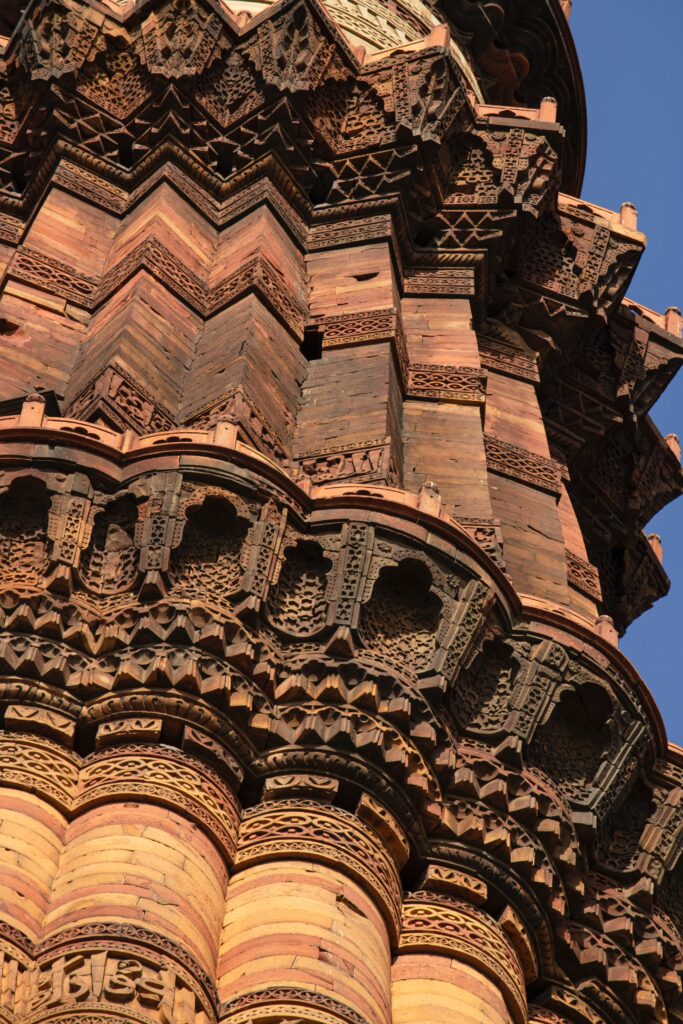
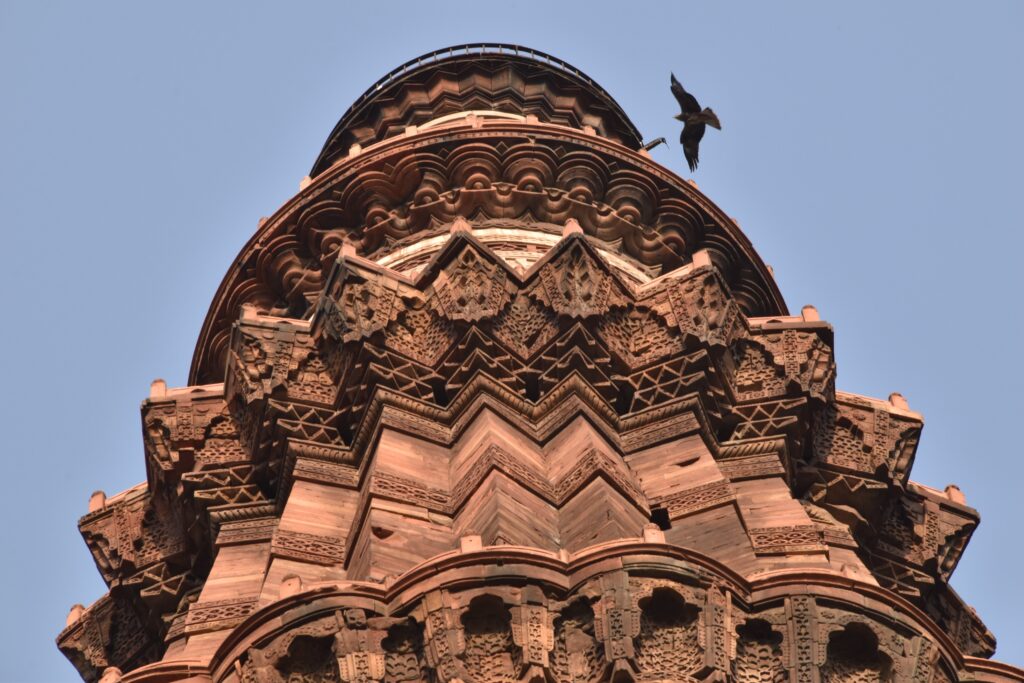
Lord ganesha idol in qutub minar complex.jpg Ruined god Ganesha stone Relief
See also
- Qutb
- Ghazni Minarets
- Firoz Minar
- Fateh Burj
- Chand Minar
- List of tallest minarets
- List of tallest structures built before the 20th century
Notes: I hope you like this blog and Appreciate my Hard work. Please write your feedback in the comment.
Wikipedia: Learn more about Qutab Minar
You may like to read
Top10 places to visit in delhi

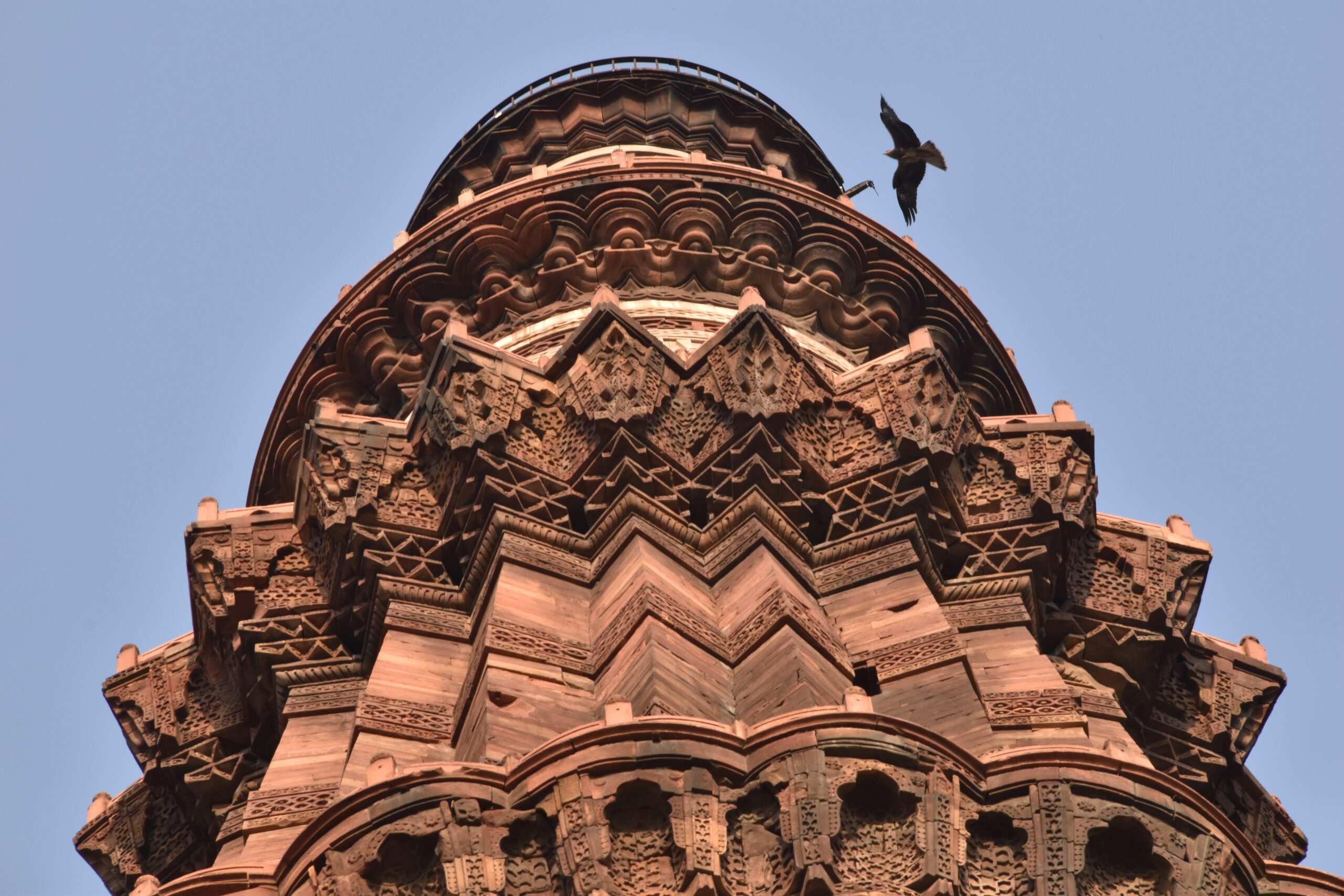
2 thoughts on “Qutab Minar The Fluidity”